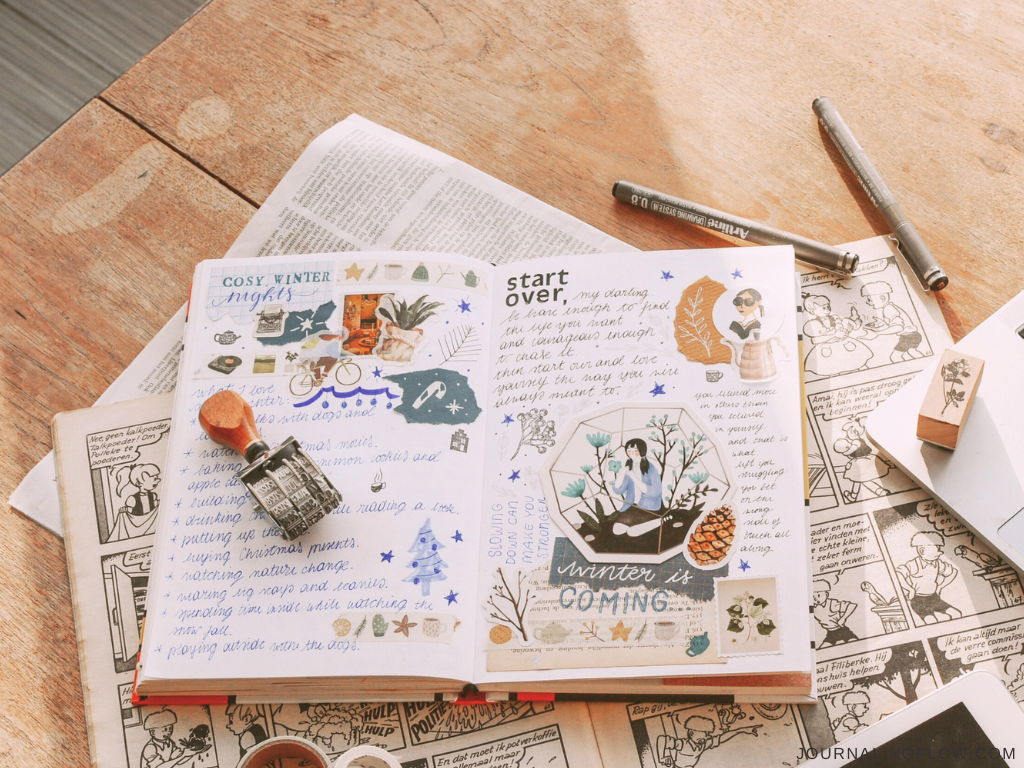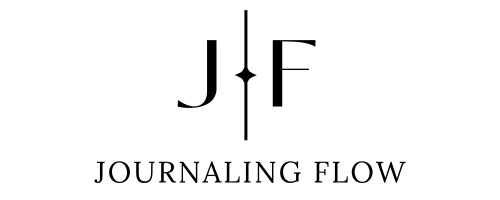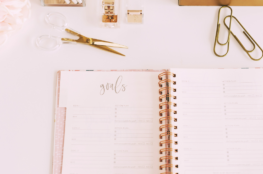
Journaling doesn’t have to be limited to words. Creative journaling is a powerful way to enhance self-expression by integrating art, doodles, and visual prompts. Combining writing with creative elements can make your practice more engaging, stimulating both the left and right sides of your brain.
In this post, we’ll explore tips and inspiration for incorporating art, doodles, and creative prompts into your journaling routine.
Why Add Creativity to Journaling?
Adding art and creative prompts to your journal helps you:
- Engage different parts of the brain: Visual expression activates creativity and allows you to process emotions in new ways.
- Deepen self-expression: Art enables you to express feelings that might be difficult to articulate with words.
- Boost mindfulness: Drawing and colouring can be meditative, promoting relaxation and stress relief.
1. Doodle Your Emotions
Sometimes words aren’t enough to capture what you’re feeling. Doodling can be a fun and effective way to express emotions without overthinking.
Exercise: Set aside a page to doodle how you feel. Use colours and shapes to represent your mood, emotions, or thoughts. You can then reflect on how your drawings align with your current state of mind.
2. Use Collages to Inspire Reflection
Collage journaling involves cutting out images, phrases, or symbols from magazines or newspapers and pasting them into your journal. This technique can inspire deeper reflection or spark creativity.
Exercise: Collect images that resonate with how you feel or reflect on your goals. After creating your collage, write about why you chose these visuals and what they represent to you.
3. Incorporate Art Prompts
Art prompts help guide your creativity and can be a refreshing break from written prompts. They stimulate your imagination and encourage you to think differently.
Example art prompts:
- “Draw your dream day.”
- “Create a page of doodles that represent your current mood.”
- “Design a cover for your journal.”
4. Blend Words and Art
Combining words with art offers a holistic journaling experience. You can use writing to complement your drawings or vice versa.
Exercise: Write down a significant thought or goal, then illustrate it. You can also try writing a quote or affirmation and decorating the page around it with sketches or patterns.
5. Creative Prompt Journaling
Creative prompts are designed to stretch your imagination. They often push you to think outside the box, making your journaling more dynamic and enjoyable.
Creative prompt examples:
- “If I could build my ideal world, what would it look like?”
- “Sketch a map of your personal journey over the last year.”
- “Illustrate what relaxation looks like to you.”
6. Colour Your Pages
Incorporating colour into your journal, whether through markers, coloured pencils, or watercolour, can energize your entries and make them more visually engaging. Colour also has a powerful emotional impact and can enhance the feelings expressed in your writing.
Exercise: Colour-code your thoughts or journal pages based on your emotions—use warm tones for positive feelings and cool tones for more reflective moods.
7. Mind Mapping
Mind mapping allows you to visually organize your thoughts. This technique helps you connect ideas creatively and spot patterns you might not notice through traditional journaling.
Exercise: Create a mind map around a central idea, such as a goal or emotion. Branch out with related ideas, tasks, or reflections, using different colours or symbols to make the process more engaging.
Conclusion: Embrace Creativity in Your Journaling
Creative journaling transforms your journaling practice into a vibrant, multi-dimensional experience. By incorporating art, doodles, and creative prompts, you can deepen your self-reflection, express your emotions in new ways, and enjoy a more playful approach to journaling.
Want more journaling inspiration?
Get exclusive prompts, techniques, and insights straight to your inbox.
Join the Journaling Flow newsletter today!



